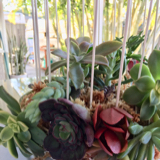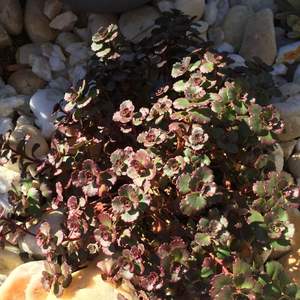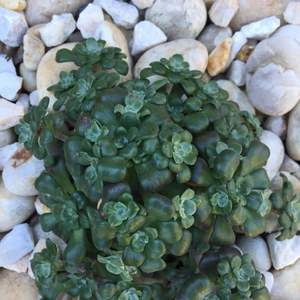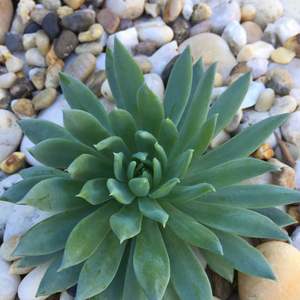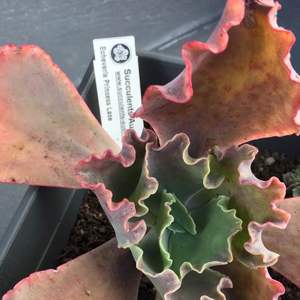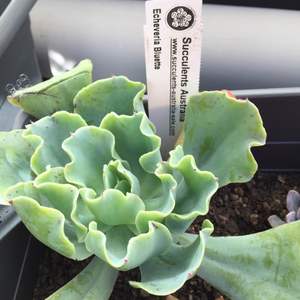文章
Miss Chen
2018年07月13日

When grown in the ground, asparagus (Asparagus officinalis) needs plenty of room for its large root system. When garden space is at a premium, however, you can grow asparagus in a container, as long as you're prepared for a smaller plant and a less bountiful harvest than you'd get with in-ground asparagus. Asparagus also spreads. So growing it in a container can help keep it from getting into parts of the garden where you don't want it to be. Asparagus grows as a perennial plant in U.S. Department of Agriculture plant hardiness zones 2 through 8, but some of its varieties are perennial in different USDA zones.

Choosing Varieties
Because container-grown asparagus plants do not produce as prolifically as asparagus grown in the ground, the best cultivars for container-growing are those that produce the highest yields per plant. 'Jersey Knight' is one such cultivar. It produces many large spears, which are the plant's edible, new shoots, and it is perennial in USDA zones 3 through 10.
Container-grown asparagus needs a fast start. So choose asparagus crowns -- 1-year-old, bare-root plants -- rather than trying to grow the plants from seeds.
Selecting a Container
Asparagus plants need a deep container that is wide enough not to crowd them. Each plant's container should be at least 18 inches deep and 1 foot wide, or give each plant that much width in a wider container. A ceramic, plastic or wooden container will work, and a large plastic storage bin is an option. The plants require good drainage, though. So if a container you choose does not have drainage holes in its base, then drill them yourself.
Planting Crowns
In spring, add organic potting soil to your container until the top of the soil is about 6 1/2 inches from the top of the container. Work about 1 ounce of granular 5-10-10 fertilizer per 3 square feet of soil surface area into the top few inches of the soil.

Set the asparagus crowns about 6 inches apart, and spread their roots on the top of the soil. Cover the crowns with 3 inches of soil, and water the soil thoroughly. Set the container in a spot that gets about eight hours of direct sunshine per day. When the crowns have grown to about 3 inches in height, cover them with 3 more inches of soil.
Fertilizing and Watering the Plants
Monitor the soil's moisture, and provide water whenever the soil dries out to a depth of about 2 inches. During hot, dry periods, the soil may need water daily.
Fertilize every spring with a handful of granular 5-10-10 fertilizer, scattering it around the crowns and lightly scratching it into the surface of the soil. Water thoroughly after applying the fertilizer.
Overwintering with Mulch
After the asparagus plants' foliage dies back in fall, cover the plants with mulch to protect them through winter. The plants' own die-back foliage can function as a convenient mulch.
Harvesting Spears
The plants probably will be ready for harvest in the third year after they were planted. In the third year, harvest the plants' spears one time after they reach 6 to 8 inches in height. In following years, you can harvest spears continuously for six to eight weeks. The spears emerge above ground from the root crowns.
Asparagus plants grown in the ground may continue to produce well for as long as 20 years, but container-grown plants will likely be productive for only three to five years.

Choosing Varieties
Because container-grown asparagus plants do not produce as prolifically as asparagus grown in the ground, the best cultivars for container-growing are those that produce the highest yields per plant. 'Jersey Knight' is one such cultivar. It produces many large spears, which are the plant's edible, new shoots, and it is perennial in USDA zones 3 through 10.
Container-grown asparagus needs a fast start. So choose asparagus crowns -- 1-year-old, bare-root plants -- rather than trying to grow the plants from seeds.
Selecting a Container
Asparagus plants need a deep container that is wide enough not to crowd them. Each plant's container should be at least 18 inches deep and 1 foot wide, or give each plant that much width in a wider container. A ceramic, plastic or wooden container will work, and a large plastic storage bin is an option. The plants require good drainage, though. So if a container you choose does not have drainage holes in its base, then drill them yourself.
Planting Crowns
In spring, add organic potting soil to your container until the top of the soil is about 6 1/2 inches from the top of the container. Work about 1 ounce of granular 5-10-10 fertilizer per 3 square feet of soil surface area into the top few inches of the soil.

Set the asparagus crowns about 6 inches apart, and spread their roots on the top of the soil. Cover the crowns with 3 inches of soil, and water the soil thoroughly. Set the container in a spot that gets about eight hours of direct sunshine per day. When the crowns have grown to about 3 inches in height, cover them with 3 more inches of soil.
Fertilizing and Watering the Plants
Monitor the soil's moisture, and provide water whenever the soil dries out to a depth of about 2 inches. During hot, dry periods, the soil may need water daily.
Fertilize every spring with a handful of granular 5-10-10 fertilizer, scattering it around the crowns and lightly scratching it into the surface of the soil. Water thoroughly after applying the fertilizer.
Overwintering with Mulch
After the asparagus plants' foliage dies back in fall, cover the plants with mulch to protect them through winter. The plants' own die-back foliage can function as a convenient mulch.
Harvesting Spears
The plants probably will be ready for harvest in the third year after they were planted. In the third year, harvest the plants' spears one time after they reach 6 to 8 inches in height. In following years, you can harvest spears continuously for six to eight weeks. The spears emerge above ground from the root crowns.
Asparagus plants grown in the ground may continue to produce well for as long as 20 years, but container-grown plants will likely be productive for only three to five years.
0
0


